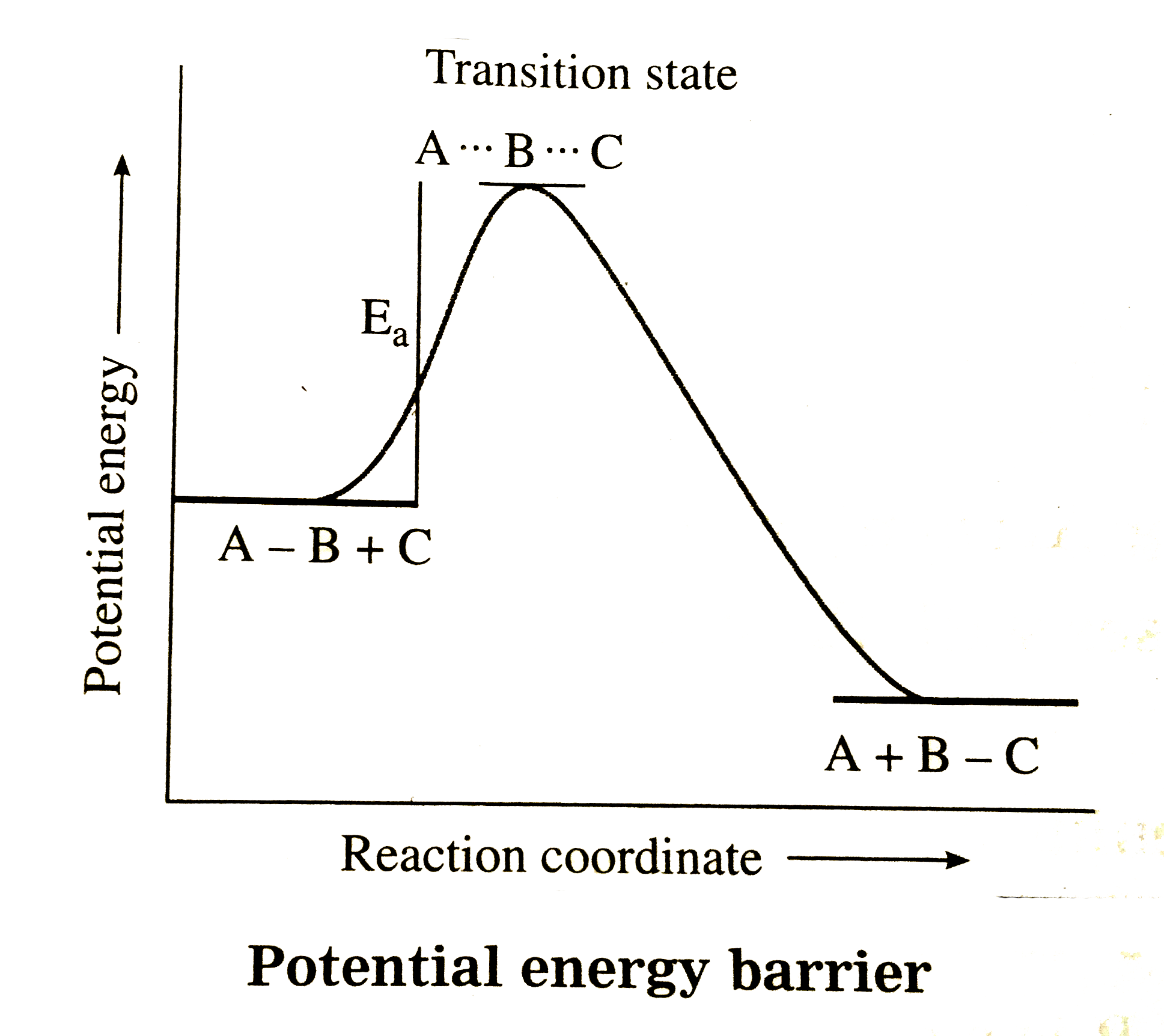Explain briefly the collision theory of bimolecular reactions.
Text Solution
Consider following a bimolecular reaction,
A−B+C→A+B−C
(i) Collisions of reactant molecules: The rate of reaction depends on the rate and frequency of collisions between reacting species. But the observed rate of reaction is low as compared to the rate of collisions.
(ii) Energy of activation : For fruitful collisions, the colliding molecules must possess a certain amount of energy called activation energy Ea. Due to collisions of three nuclei namely A, B and C the old A-B bond is weakened while new bond is partially formed between B and C, and results in the formation of an activated complex or a transition state.A−B+CReactants→A....B....CActivatedComplex→A+B−CProduct
The transition state always has higher energy than reactants or products. Due to high energy, activated complex is unstable, short lived and decomposes into the products.
The fraction (f) of molesules at temperature T having activation energy Ea is given by f=e−Ea/RT . If Z is the total collision frequency then successful collision frequency will be Z×e−Ea/RT , and the rate of collisions will be.
Total collision rate =Z×[AB]×[C]
Successful collision rate active masses of AB and C respectively.
Orientation of reactant molecules: The colliding molecules must have or
Reaction rate =Px successful collision rate
=P×Z×e−Ea/RT×[AB]×c
By rate law, for bimolecular second order, the rate of reaction is, Reaction rate = [AB][C], where k is a rate constant. By comparing above two equations, we can write,
k=P×Z×e−Ea/RT
Since P and Z are constant at constant temperature for the given reactants, we can write P×Z=A where A is called frequency factor or k=P×Z×e−Ea/RT. This is called Arrhenius equation.

|
Similar Questions
Knowledge Check
According to the collision theory of chemical reactions,
AA chemical reaction occurs with every molecular collisionBRate is directly proportional to the number of collisions per secondCReactions in the gas phase are always of zero orderDRates of reaction are of the order of molecular speedsAccording to collision theory of reaction rates
Aevery collision between reactans leads to chemical reactionBrate of reaction is proportional to velocity of moleculesCall reactions which occur in gaseous phase are zero order reactionsDrate of reaction is directly proportional to collision frequencyAccording to collision theory of reaction rates
Aevery collision between reactants leads to chemical reactionBrate of reaction is proportional to velocity of moleculesCall reactions which occur in gaseous phase are zero order reactionsDrate of reaction is directly proportional to collision frequency
Write the main points of collision theory of reaction rates.
View SolutionCollision theory is not satisfactory –––––––––––––––––––for bimolecular reactions.
View SolutionAccroding to collision theory of reaction rates :
View SolutionIn collision theory of chemical reaction, ZAB represents
View SolutionIn collision theory of chemical reaction, ZAB represents
View Solution

